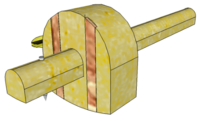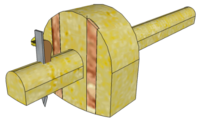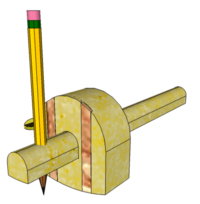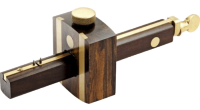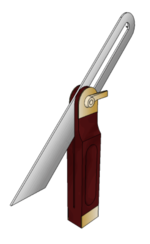Gauges
From DT Online
Description
Gauges are mainly used in designing and making to measure, mark or transfer distances.
Features and Applications
| Marking Gauge | Used to scribe lines parallel to the Face Edge or Face Side of timber or similar materials (i.e. used in much the same way that Oddlegs are used by metalworkers). | |
| Cutting Gauge | The small cutting blade is used instead of the normal spur of a Marking Gauge when lines have to be scribed across the Grain (e.g. when marking out a shoulder for a Housing Joint) | |
| Pencil Gauge | Sometimes scribing a line into the surface would be detrimental to the finished product and so, although less accurate, a pencil can be used instead of either a spur or a blade (e.g. when marking a bevel or chamfer) | |
| Mortise Gauge (aka Mortice Gauge) | These are similar to a Marking Gauge but have two spurs which are set a distance apart equal to the Mortise Chisel to be used when marking out for a Mortise and Tenon Joint for example. | |
| Bevel Gauge (aka Bevel Square or Sliding Bevel) | These are used to copy or mark angles other than the more common 90 degrees or 45 degrees. |
- See also Precision Marking and Measuring for information on gauges used in engineering.
 |
 |
 |
 |
 |
 |
| Draper Marking Gauge |
Draper Marking and Mortice Gauge |
Irwin Marples Marking Gauge |
Irwin Marples Mortice Gauge |
Irwin Marples Cutting Gauge |
Carpenters Sliding Bevel |
